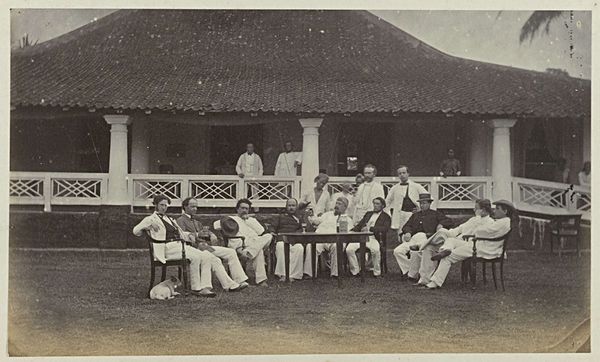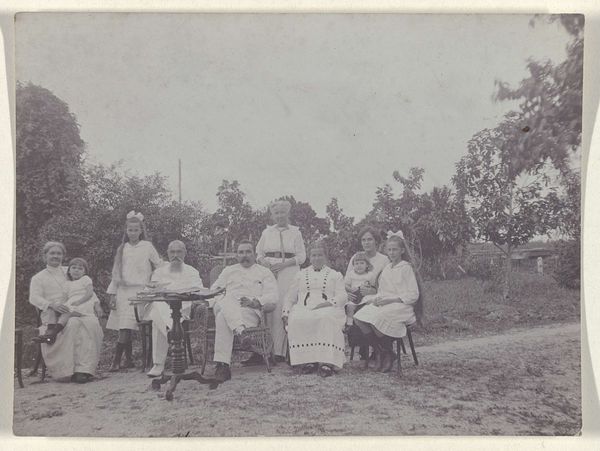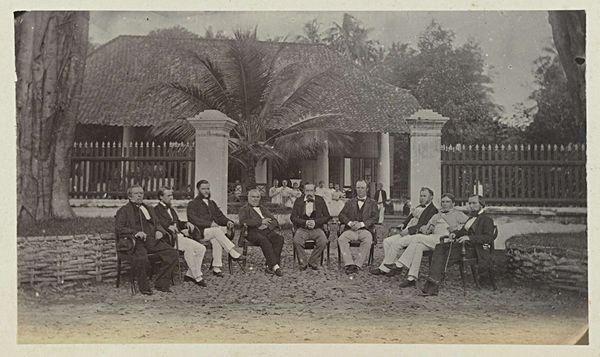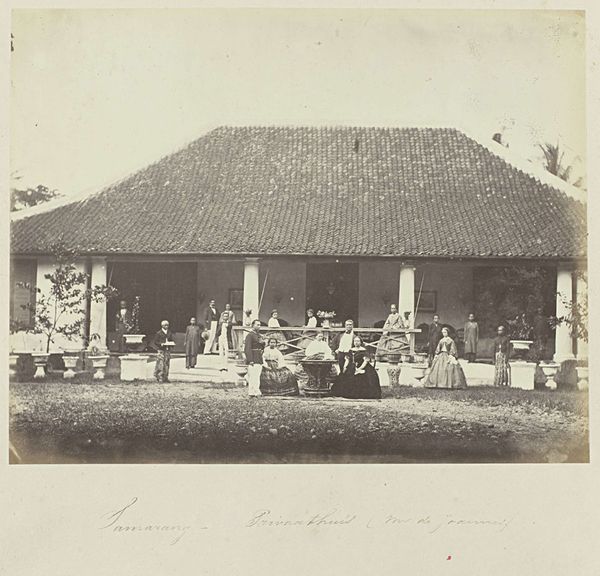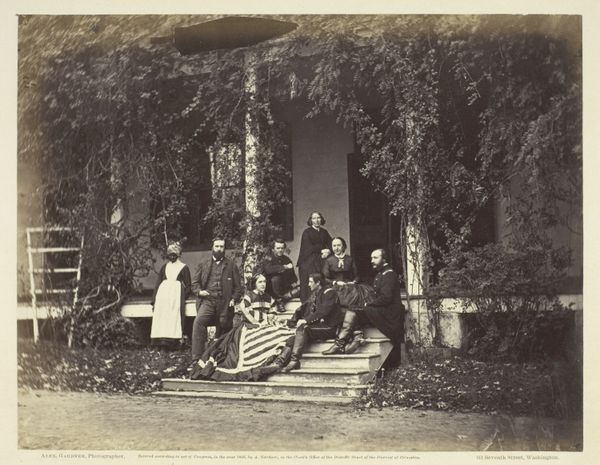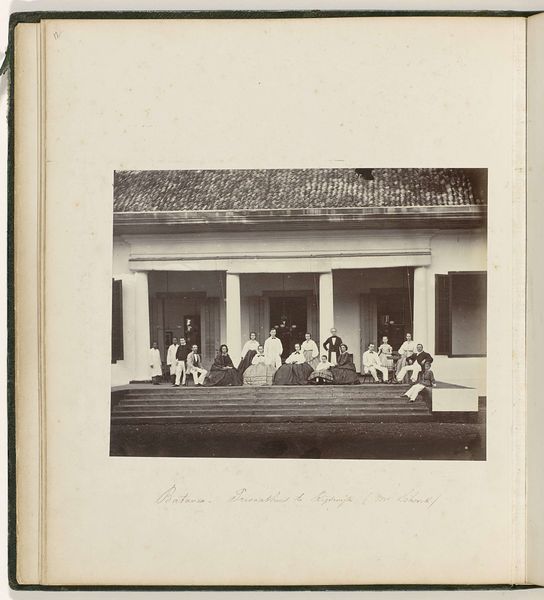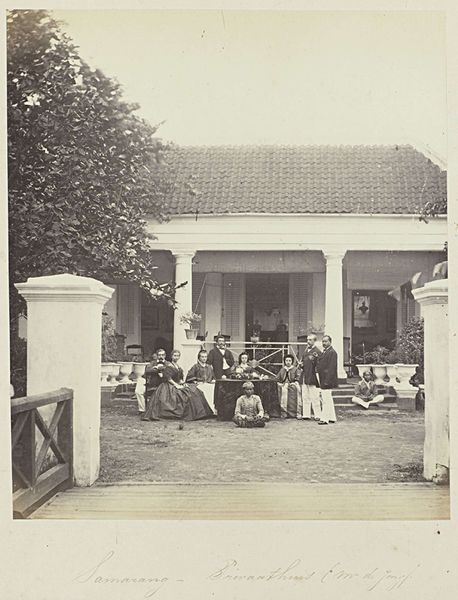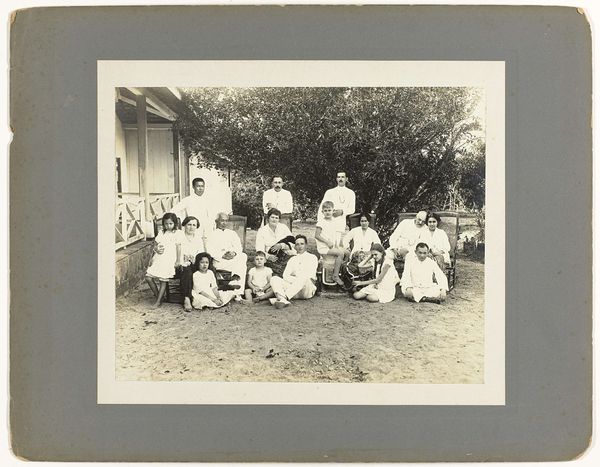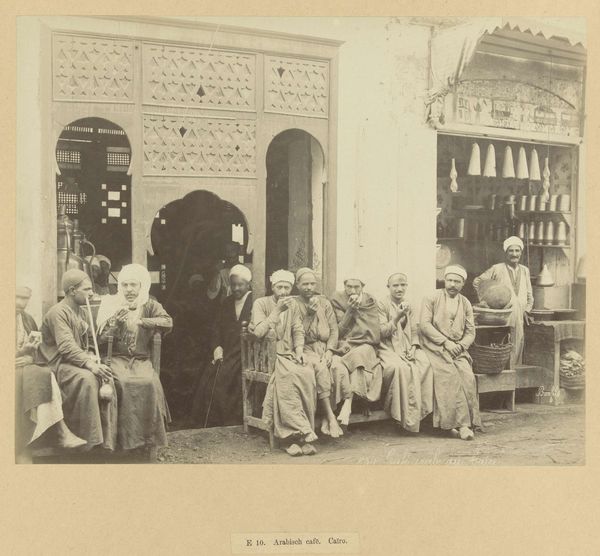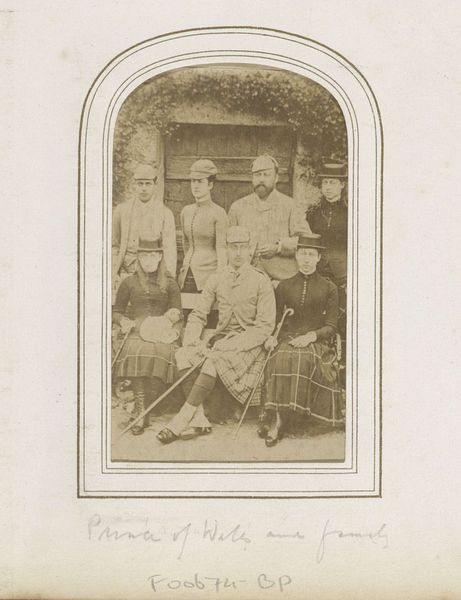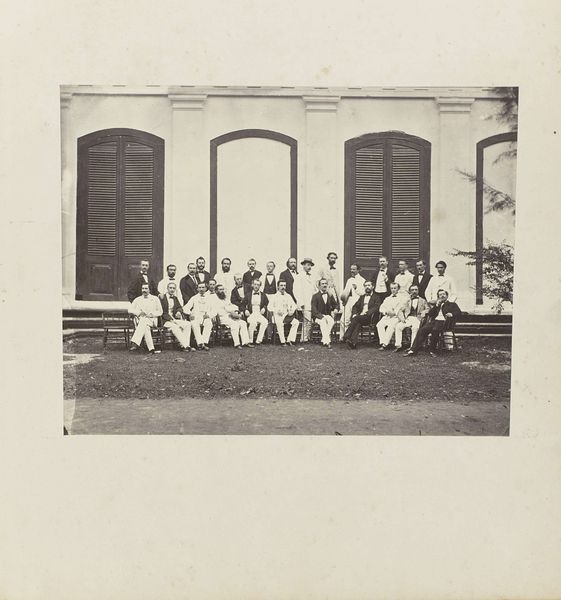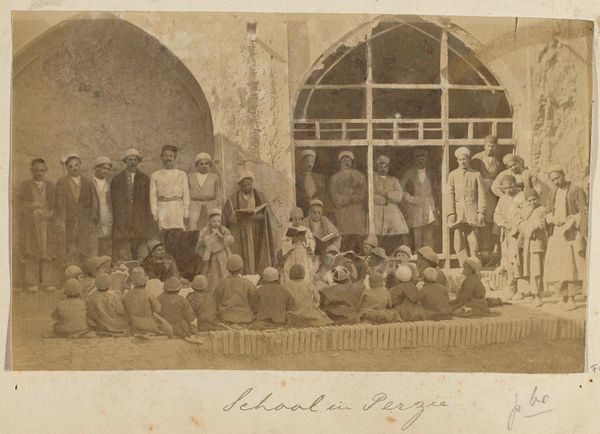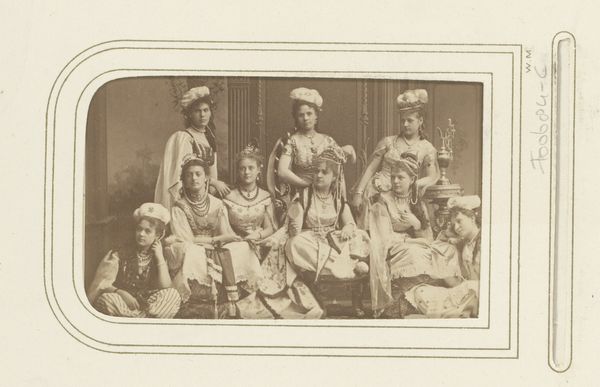
photography, gelatin-silver-print
#
portrait
#
african-art
#
archive photography
#
photography
#
historical photography
#
historical fashion
#
group-portraits
#
gelatin-silver-print
#
19th century
#
realism
Dimensions: height 107 mm, width 171 mm
Copyright: Rijks Museum: Open Domain
Curator: Welcome to the Rijksmuseum. We’re looking at a gelatin-silver print from around 1863 to 1869. Titled "Familieportret," it's attributed to Woodbury & Page. Editor: My first thought? It’s surprisingly intimate for a formal portrait. There's something very posed and detached in the way that all of the family is at the table and not talking. The way light defines shapes, there's almost an eerie silence to the scene. Curator: That silence speaks to the conventions of the time. Photography was becoming more widespread, but still relatively novel. It's important to understand these studio practices reflected colonial power structures, specifically in places like Indonesia, where Woodbury & Page were based. Editor: Definitely. And look at the radial symmetry: all of the figures circle round the center. Our eye moves and we realize how artificial it seems because, well, its a set, not an impromptu photo. There’s a theatrical feeling in their careful arrangement, a conscious effort to project status and create this family ideal. Curator: It does also subtly reveal social stratification. Consider how the sitters who are indigenous Indonesian are situated, their postures, their garb relative to the Europeans pictured. Even in what appears a private family moment, we are seeing a very public statement about race and empire. The photograph reinforces these distinctions visually. Editor: You're absolutely right. Visually, there is much attention put into framing, for sure. Notice the detail in the patterns of the roof tiles behind, contrasting with the faces, for instance? A subtle play with geometric shapes. It anchors the figures but in an uncomfortable and uneasy tension with one another, they're both separate from and connected to that space. Curator: It underscores your point, how every compositional element contributes to constructing and understanding social narratives, power dynamics in this colonial context. It moves the photo beyond just technical ability into something that also says much about hierarchy. Editor: True. Well, it's interesting to see how such an initially simple photographic work becomes, on second inspection, so intricately layered. Curator: Indeed, It’s a reminder that art isn’t created in a vacuum, but rather speaks to its social and historical surroundings.
Comments
No comments
Be the first to comment and join the conversation on the ultimate creative platform.
